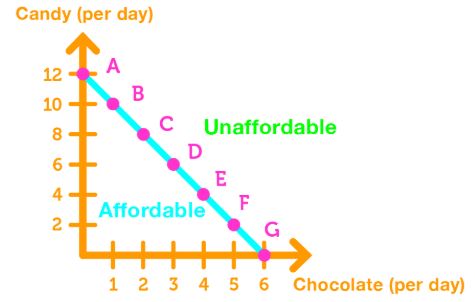Consumption Choices
Recall that the goal of a consumer is to always achieve max utility.
In order for consumers to gain max utility, we must look at two things:
-
Consumption Possibilities Curve
- This is what consumers can afford to buy
- All the options of consumption when consumer uses all their income (budget line)
-
Consumer Preferences (Utility)
- What the consumer likes and dislikes
- Consumer likes give utility, and marginal utility
Consumption Possibilities Curve (Budget Line)
The consumption possibilities curve (line) shows the boundary between the combination of goods that consumer can afford and cannot afford. What they can afford to buy depend on their specified income.

- Left of the line is what consumers can afford (and still have income leftover).
- On the line is what consumers can afford (and have no income leftover).
- Right of the line is what consumers cannot afford.
Utility is at its highest at some point on the budget line.
Consumer Preferences (Utility)
A choice that consumers make depends on their preferences. Usually, consumers will pick the choice that will maximize their utility.
Utility: the satisfaction or benefit that a consumer gets from consuming goods. The more goods they consume, the higher the utility.
Utility Maximization: the goal of the consumer to maximize their satisfaction or benefit using the limited income that they have.
Total utility (TU): the total amount of satisfaction gained from consuming all their consumption activities.
Marginal Utility (MU): The additional utility gained from consuming an additional unit of a good.
Note 1: To measure total utility, we must look at the utility from the goods individually.
Note 2: From the Total Utility Curve, we can also graph the Marginal Utility curve.
The more unit of good a consumer tries to consume, the less satisfying it is. For example, you are really satisfied when you eat the first slice of pizza, but you get less and less satisfied when eating more and more slices. This is called diminishing marginal utility. The additional utility gained from the additional unit of good decreases.






